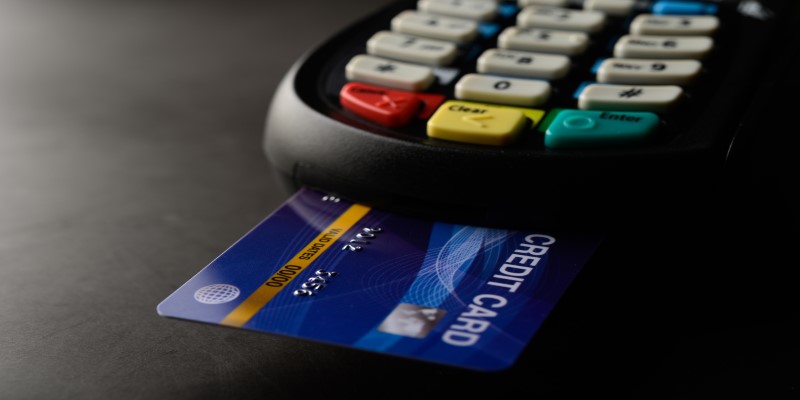Debt is an inevitable part of many people's financial lives, but not all debt is created equal. Two of the most prevalent types of personal debt are student loans and credit card debt. While both types of debt can weigh heavily on your financial future, they have key differences in how they accumulate, their interest rates, and repayment terms. Understanding these differences can help you make informed decisions and develop strategies for paying them off effectively. In this article, we'll compare student loan debt and credit card debt, breaking down their features and helping you navigate how to manage each.

Student loan debt refers to money borrowed to cover the cost of education, typically for college or vocational school. Students or their parents can take out these loans to cover tuition, fees, room, board, and other educational expenses. There are two main types of student loans: federal and private.
The government provides federal student loans, which generally come with lower interest rates, flexible repayment plans, and protections such as deferment or forbearance options. Private student loans, offered by banks or credit unions, often have higher interest rates and less flexibility in repayment options.
One of the distinct features of student loan debt is that it's often considered "good debt" because it's an investment in your future. The idea is that education increases earning potential over time, making student loans a justifiable financial burden for many.
Credit card debt arises when individuals use their credit cards to make purchases they cannot pay off immediately. Unlike student loans, which are typically used for a specific purpose, credit card debt can accumulate from various types of spending, from essentials like groceries to luxury items like vacations.
Credit card debt is often considered "bad debt" due to its high interest rates and the revolving nature of the credit system. If a cardholder only pays the minimum balance each month, the outstanding debt continues to accrue interest, potentially growing quickly over time. Credit card companies charge significantly higher interest rates compared to most student loans, making it one of the most expensive types of debt if not managed properly.

Following are some of the major differences between these two types of debts.
One of the most significant differences between student loan debt and credit card debt is the interest rate. Federal student loans often have low, fixed interest rates set by the government, ranging from 3% to 7%, depending on the loan type and when it was borrowed. Private student loans can have higher rates, but they're still generally lower than those for credit cards.
On the other hand, credit card interest rates can range from 15% to 25%, with some cards going even higher, especially for those with poor credit scores. This high interest rate means that credit card debt can snowball if not paid off promptly, trapping people in a cycle of debt. Because of the compounding interest, paying off a large credit card balance can become a long-term financial burden.
Student loans often come with more flexible repayment options than credit card debt. Federal student loans offer a variety of repayment plans, including income-driven repayment options that adjust your monthly payment based on your income. There's also the possibility of loan forgiveness after a certain period, especially for individuals in public service jobs. Additionally, deferment and forbearance options allow borrowers to pause payments if they're experiencing financial hardship temporarily.
Credit card debt offers far less flexibility. If you fail to make minimum payments, your credit score can take a hit, and you'll likely incur late fees and higher interest rates. Credit card companies do not offer forgiveness programs, and while some may offer hardship programs, they're typically less comprehensive than those provided by student loan lenders.
Both student loan debt and credit card debt can affect your credit score but in different ways. Having a mix of various types of debt, such as installment loans (like student loans) and revolving credit (like credit cards), can improve your credit score, as it demonstrates your ability to manage various forms of credit.
Credit card debt can harm your credit score more quickly if you max out your cards or fail to make payments on time. The credit utilization ratio, or the amount of credit used compared to your available credit, plays a significant role in your credit score. High balances can negatively affect your score even if you're making payments.
Student loans, on the other hand, are considered installment loans with fixed payments over a set period. As long as you make timely payments, student loan debt is unlikely to damage your credit as much as credit card debt might.
Many financial experts recommend focusing on paying off credit card debt first when managing student loans and credit card debt. The reasoning behind this is simple: credit card interest rates are significantly higher, meaning that the longer the balance remains, the more expensive it becomes. Student loan interest rates, on the other hand, are lower and often tax-deductible, which can provide some financial relief.
However, every financial situation is different, and in some cases, a balanced approach might be bestpaying off high-interest credit card debt while making manageable payments on student loans.
In the battle of student loan debt versus credit card debt, both present their challenges and opportunities for financial management. Student loans often come with lower interest rates and flexible repayment options, but they can still represent a significant long-term commitment. Credit card debt, with its higher interest rates, can quickly spiral out of control if not managed carefully. Understanding the differences between the two types of debt can help you develop a clearer strategy for tackling each and improving your overall financial health. Prioritizing repayment and staying informed about your options is the best way to maintain economic stability.

By Kristina Cappetta/Sep 20, 2024

By Aldrich Acheson/Sep 25, 2024

By Elena Davis/Sep 26, 2024

By Juliana Daniel/Oct 31, 2024

By Pamela Andrew/Sep 25, 2024

By Jennifer Redmond/Sep 26, 2024

By Noa Ensign/Sep 20, 2024

By Triston Martin/Sep 07, 2024

By Alison Perry/Sep 20, 2024

By Juliana Daniel/Sep 26, 2024

By Madison Evans/Sep 21, 2024

By Elva Flynn/Oct 31, 2024